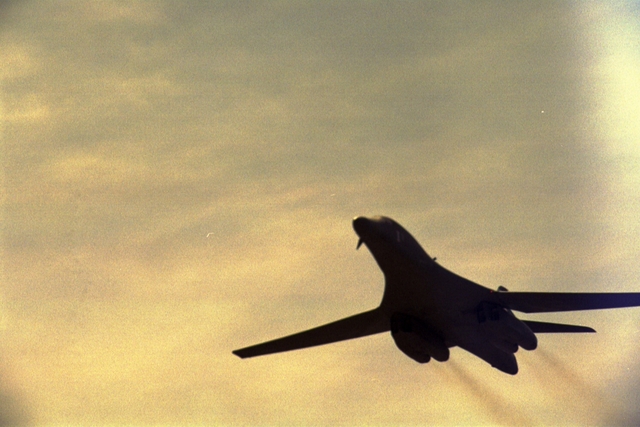Search the Community
Showing results for tags 'bone'.
Found 2 results
-
-

Dyess receives first operational IBS-upgraded B-1
FastCargo posted a topic in Military and General Aviation
(original story located here) 1/24/2014 - DYESS AIR FORCE BASE, Texas -- The first operational B-1B Lancer with the Integrated Battle Station upgrade, landed here Jan. 21 with a ceremony celebrating its arrival Jan. 24. The IBS is a combination of three different upgrades, which include a Fully Integrated Data Link, a Vertical Situation Display Upgrade and a Central Integrated System Upgrade. During the ceremony Brig. Gen. Glen VanHerck, 7th Bomb Wing commander, spoke about the benefits of the newly upgraded systems. "This will be a platform that will take us to the next generation of long-range strike capability," said VanHerck. "Increased situational awareness for our pilots, a more reliable and supportable cockpit, user-friendly systems that will help our maintainers and the ability to conduct more effective training and testing in the future are just some of those impacts." The FIDL is a modern data link communication network that allows real-time communication with many other aircraft, ground stations and allied forces. The VSDU replaced the older VSDs with more reliable equipment that show more information faster and with more options to improve in-flight efficiency. The CITS modernized the old Light Emitting Diode display computers that are used by flight and ground support personnel to identify and troubleshoot B-1 system anomalies. "Integration into the data link environment and the increased maintainability, as well as the new computers and displays are capable of showing a better picture of the battlespace with more advanced graphics will enable the B-1 to be a force for decades to come," said Maj. Michael Jungquist, 337th Test and Evaluation Squadron software Block 16 project officer. These new upgrades to the B-1B will also allow the aircraft to work more effectively with other joint and coalition forces. "Real-time communication networks will allow for immediate mission planning and much quicker in-flight target changes. As the threat changes, so can the coordination with allied forces, which enables the B-1 to reach and target the new strike location," said Master Sgt. Eric Dassinger, 7th Maintenance Group wing avionics manager. "The Link-16 network we can connect to through FIDL is already being used on many other platforms, so integration with allied forces is nearly seamless. Full battlefield communication and information exchanges will greatly improve mission planning and provide real-time mission feedback." The three upgrades that comprise the IBS will potentially eliminate at least 30 minutes per ground test -diagnostic system checks that are similar to in-flight checks, and reducing the risk of human error from having to key in each test function. "Aircrew will get the new screens and updated instrumentation in the front and aft stations where they will be able to adjust the information shown to cater to the mission at hand," Dassinger said. "Maintainers will benefit from the CITS upgrade by being able to monitor more system diagnostics than before, which in turn, will shorten troubleshooting time. Also full complements of ground test functions are stored within the CITS; this means not having to punch in the entire test key for key. It also reduces human error from having to key in each test function since they are pre-built." Upgrades such as these enable the B-1 to grow and keep pace with newer platforms that the aircraft may be working with. "There are many growth capabilities already built into the system," Dassinger said. "As technology changes, this new system will be able to adapt more easily. More reliable parts mean the Air Force can save money and roll it into new programs and updates." With the new IBS upgrade to the B-1, the mission capabilities of the aircraft could evolve as new mission sets arise in the theater of operations. "Once the program is in full swing and we have a larger inventory of IBS equipped aircraft, I could see the operations tempo increasing," Dassinger said. "When you add up all that the aircraft is already capable of, and then add the reliability and new communication features; everyone is going to want the B-1 protecting their ground forces and providing directed firepower across the globe." Although Dyess is the first base to receive the first operational IBS upgraded B-1, the upgrade program is scheduled to continue on through 2019, with Ellsworth Air Force Base also receiving upgraded aircraft. by Senior Airman Kia Atkins 7th Bomb Wing Public Affairs



